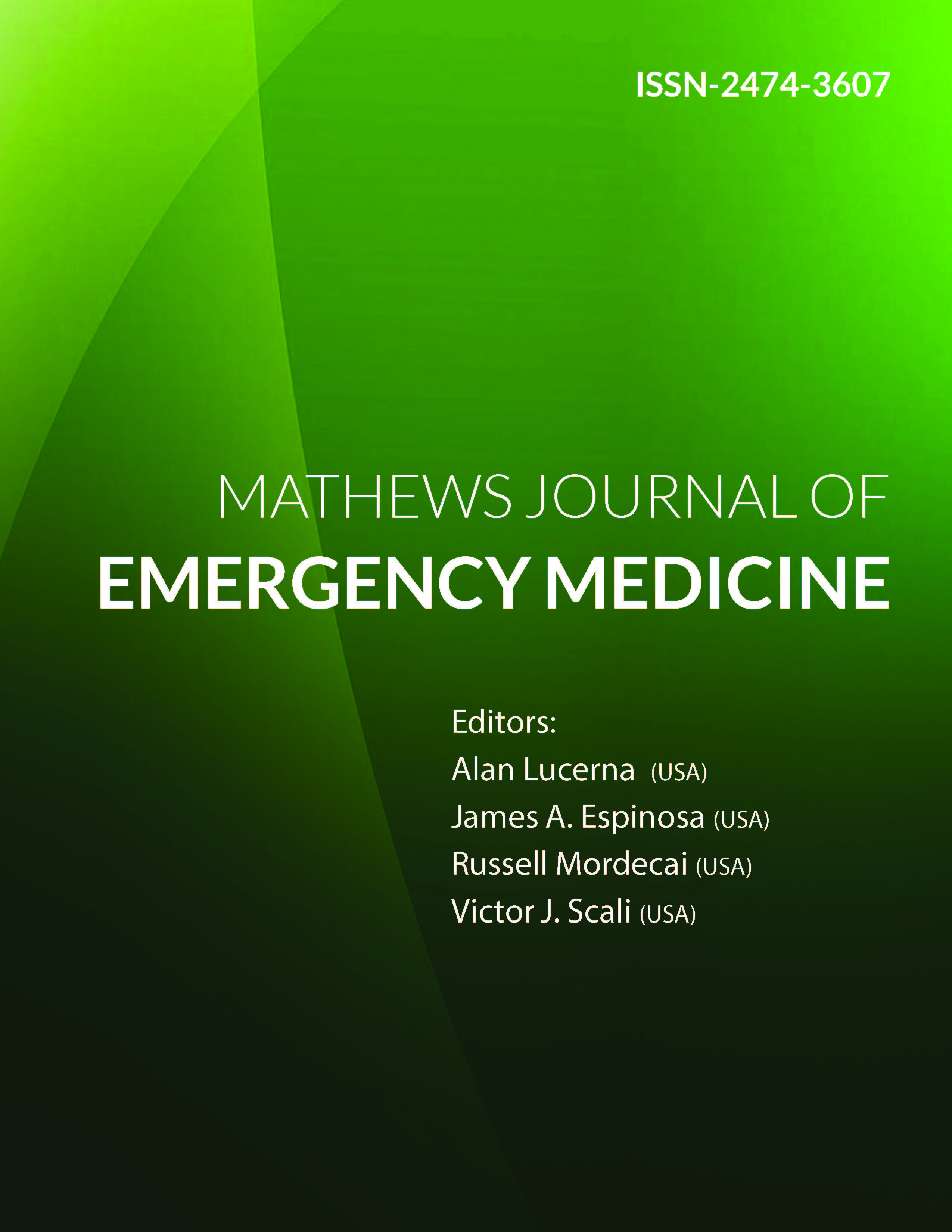
Information Links
Previous Issues Volume 8, Issue 3 - 2023
What is the Physical Activity of Emergency Physicians (Residents and Attendings) During a Shift, Measured in Steps Walked? The STEP study: Quantitative Study of Steps Taken in an Emergency Program (STEP)
James Espinosa1,*, Joshua Brown2, Ryan Brennessel3, Jason Kim4, Niels Snyder2, Analiese Wagner5, Alan Lucerna1
1Department of Emergency Medicine, Jefferson NJ, Stratford, NJ, USA
2Department of Emergency Medicine, Bryn Mawr Hospital, Bryn Mawr, PA, USA
3Department of Emergency Medicine, Hackensack Meridian Health, Bayshore Medical Center, Holmdel, NJ, USA
4Department of Emergency Medicine, Dignity Health-St Rose Dominican Hospitals, Las Vegas, NV, USA
5Department of Emergency Medicine, Nash General Hospital, Cary, NC, USA
*Corresponding author: James Espinosa, MD, Department of Emergency Medicine, Rowan University SOM Kennedy University Hospital, 18 East Laurel Road, Stratford, NJ 08084, USA, Phone: 856 304 5101; E-mail: [email protected].
Received Date: June 09, 2023
Published Date: July 03, 2023
Citation: Espinosa J, Brown J, Brennessel R, Kim J, Snyder N, Wagner A, Lucerna A, et al. (2023). What is the Physical Activity of Emergency Physicians (Residents and Attendings) During a Shift, Measured in Steps Walked? The STEP study: Quantitative Study of Steps Taken in an Emergency Program (STEP). Mathews J Emergency Med. 8(3):55.
Copyrights: Espinosa J, et al. © (2023).
ABSTRACT
Background: Physician wellness is multifactorial. A benchmark of the physical activity component of well has been said to be the number of steps walked, with 10,000 steps per day as a CDC general guideline. 7,000 to 8,000 steps per day would be needed to meet the CDC’s recommendation of 150 minutes of moderate activity a week. Aim of study: The aim of this study was to assess the number of steps taken by emergency medicine resident physicians and emergency medicine attending physicians at work during shifts. Materials and Methods: The design was an observational, prospective cohort study of emergency medicine residents and emergency medicine attendings in a three campus community/University affiliated system. A pedometer was placed or provided by a member of the study team on the participant. The participant completed a confidential study sheet with the number of steps taken (pedometer reading). A minimum of 10 shifts of emergency resident data per campus and 10 shifts of EM attending data per campus was obtained. Results: There were 128 observations in the study. There was only one observation that reached 10,000 steps. (1/128=0.7%) Residents and Attendings did not differ statistically in reference to steps per hour, percent achieving 10,000 steps or in average steps per shift. Although the total number of steps per shift was higher for residents (NS), residents worked longer shifts (11.6 hours average) than did Attendings (10.9 hours average. (p=.01) Conclusions: There was only one observation that reached 10,000 steps. (1/128=0.7%) Residents and Attendings did not differ statistically in reference to steps per hour, percent achieving 10,000 steps, or in average steps per shift. If 10,000 steps is an important benchmark for daily steps for fitness, then it is clear that other walking would have to be done in addition to working a shift, as achieving 10,000 steps on a shift was extremely rare in this study.
Keywords: Physician Wellness, Resident Wellness, 10,000 Steps Program.